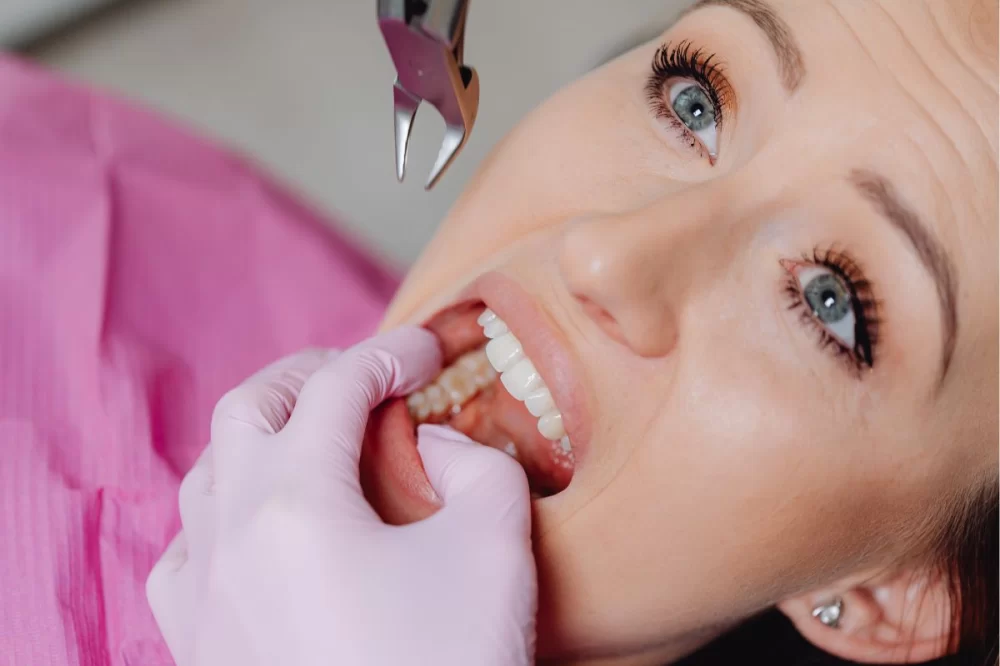
- understanding-oral-infections
- pre-procedure-preparation
- immediate-post-operative-care
- long-term-prevention-tips
- real-patient-stories-and-insights
- recommended-resources
1. Understanding Oral Infections After Dental Procedures
Oral infections can occur when bacteria enter surgical wounds or areas of the mouth affected by dental procedures. Common symptoms include swelling, pain, pus, fever, and unpleasant breath. These infections can delay healing and lead to serious complications if left untreated. Understanding how they develop helps in preventing them. Often, patients are unaware that even routine procedures like tooth extractions or deep cleanings can lead to infections without proper care.
The mouth hosts over 700 types of bacteria. While many are harmless, surgical sites provide a perfect gateway for harmful microbes. That’s why post-operative care is crucial. Knowing what triggers infections—and how to avoid those triggers—is the first step to ensuring a safe recovery.
2. Pre-Procedure Preparation: Building a Strong Foundation
2.1 Clean Slate: Oral Hygiene Before the Procedure
A clean mouth is less likely to harbor harmful bacteria. Patients are advised to brush and floss thoroughly before their dental appointment. In certain cases, dentists may recommend an antibacterial mouth rinse to minimize bacterial presence. Some surgeries may even require antibiotics beforehand, especially for those with weakened immune systems.
2.2 Medical History Matters
Always inform your dentist about any existing health conditions or medications. Diabetes, for instance, slows healing and increases infection risk. A thorough medical evaluation helps your dentist tailor your treatment and preventive strategy accordingly.
2.3 Choosing the Right Clinic
Cleanliness, sterilization protocols, and professional reputation of the dental clinic can significantly reduce infection risks. If you’re looking for trusted care and services, consider checking options at Dentistry Toothtruth—where professional standards meet personal care.
3. Immediate Post-Operative Care: First 48 Hours
3.1 Protect the Surgical Site
After a procedure, avoid touching or disturbing the treated area. Do not rinse vigorously, drink from a straw, or smoke, as these actions may dislodge the blood clot and expose the wound to bacteria.
3.2 Medications and Pain Management
Take all prescribed medications exactly as directed. Antibiotics help control bacterial growth, while painkillers ease discomfort, encouraging you to maintain oral hygiene. Don’t stop antibiotics early even if you feel better, as this could allow bacteria to regrow stronger.
3.3 Diet Considerations
Stick to soft, nutrient-rich foods like mashed potatoes, yogurt, or broths. Avoid spicy, hot, or crunchy items that may irritate the area. Drinking plenty of water also helps flush toxins and keeps tissues hydrated.
4. Long-Term Prevention Tips: Healing and Beyond
4.1 Establish a Gentle Oral Hygiene Routine
Gently brush with a soft-bristled toothbrush around the surgical area. Rinsing with salt water after 24 hours aids in reducing swelling and cleansing the wound naturally. Continue flossing other teeth to prevent bacterial spread.
4.2 Watch for Signs of Infection
Persistent pain, swelling, or a bad taste in the mouth beyond three days could signal an infection. Don’t wait. Early detection and intervention can prevent complications.
4.3 Regular Dental Check-ups
Routine follow-up appointments allow dentists to monitor healing progress. Early signs of infection or abnormal healing can be addressed quickly. Trusted platforms like Dentistry Toothtruth can help you locate top-reviewed dental professionals in your area for follow-up visits.
5. Real Patient Stories and Insights
Take Sarah’s case for example. After undergoing wisdom tooth extraction, she developed a painful infection that delayed healing by over two weeks. She later realized she had resumed using a straw too early, dislodging the clot. Now, she shares her experience to educate others on the importance of following every post-op instruction.
In contrast, James, a diabetic patient, was extra cautious after his implant surgery. By strictly adhering to antibiotic schedules and using antiseptic mouthwash, he experienced smooth, complication-free healing. His dentist also emphasized consistent glucose control, which played a vital role.
6. Recommended Resources for Safer Recovery
For those recovering from dental surgeries, having access to the right products and expert advice is crucial. At Dentistry Toothtruth, you’ll find carefully selected dental care items like soft-bristled brushes, antimicrobial rinses, and recovery-safe foods that support healing. It’s more than a shop—it’s a guide tailored to your dental wellness journey.
Remember, preventing oral infections doesn’t stop after surgery. It’s an ongoing process involving care, vigilance, and sometimes, a little professional help. Trust your instincts, follow professional guidelines, and always seek reliable support when in doubt.







 Alliance Orthodontics4.0 (23 review)
Alliance Orthodontics4.0 (23 review) Growing Smiles of Voorhees4.0 (2464 review)
Growing Smiles of Voorhees4.0 (2464 review) Dr. David Miller DDS5.0 (1 review)
Dr. David Miller DDS5.0 (1 review) Michael C. Byars, DDS5.0 (67 review)
Michael C. Byars, DDS5.0 (67 review) West Loop Dental Associates4.0 (24 review)
West Loop Dental Associates4.0 (24 review) David A. Goodman, DMD Alan C. Ko, DMD Advanced Cosmetic & Prosthetic Dentistry5.0 (333 review)
David A. Goodman, DMD Alan C. Ko, DMD Advanced Cosmetic & Prosthetic Dentistry5.0 (333 review) The Importance of Oral Health Education During Pregnancy for a Healthy Pregnancy
The Importance of Oral Health Education During Pregnancy for a Healthy Pregnancy Best Tips for Brushing Your Teeth Properly for Healthy Gums: Essential Techniques for Oral Health
Best Tips for Brushing Your Teeth Properly for Healthy Gums: Essential Techniques for Oral Health Why Skipping Dental Checkups Can Lead to Bigger Oral Health Problems
Why Skipping Dental Checkups Can Lead to Bigger Oral Health Problems Advantages of Porcelain Dental Restorations
Advantages of Porcelain Dental Restorations How Can Diabetes Cause Tooth and Gum Problems? Preventing and Managing Oral Health Issues
How Can Diabetes Cause Tooth and Gum Problems? Preventing and Managing Oral Health Issues Healthy Habits for Promoting Good Oral Health and Hygiene: Tips for a Healthy Smile
Healthy Habits for Promoting Good Oral Health and Hygiene: Tips for a Healthy Smile